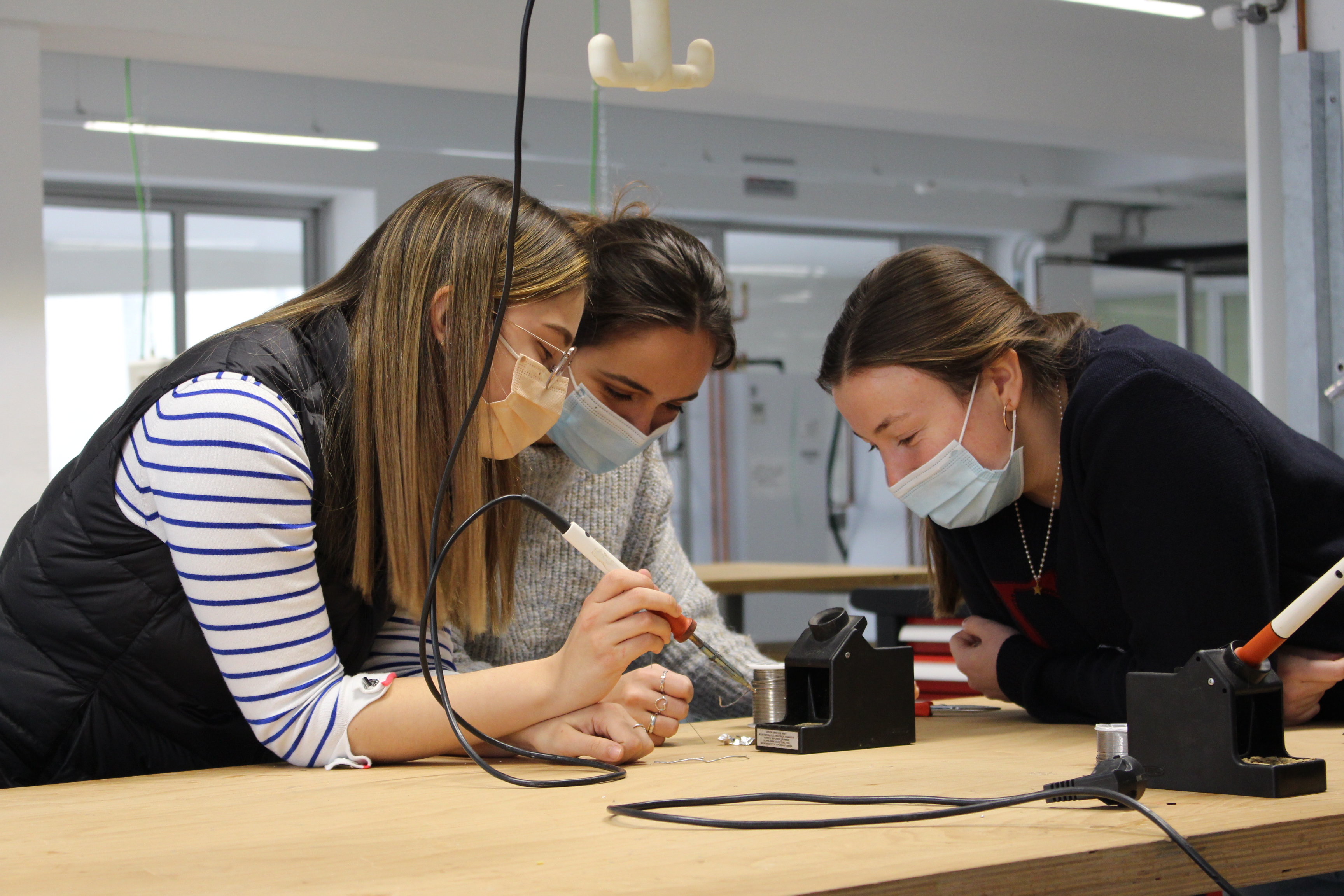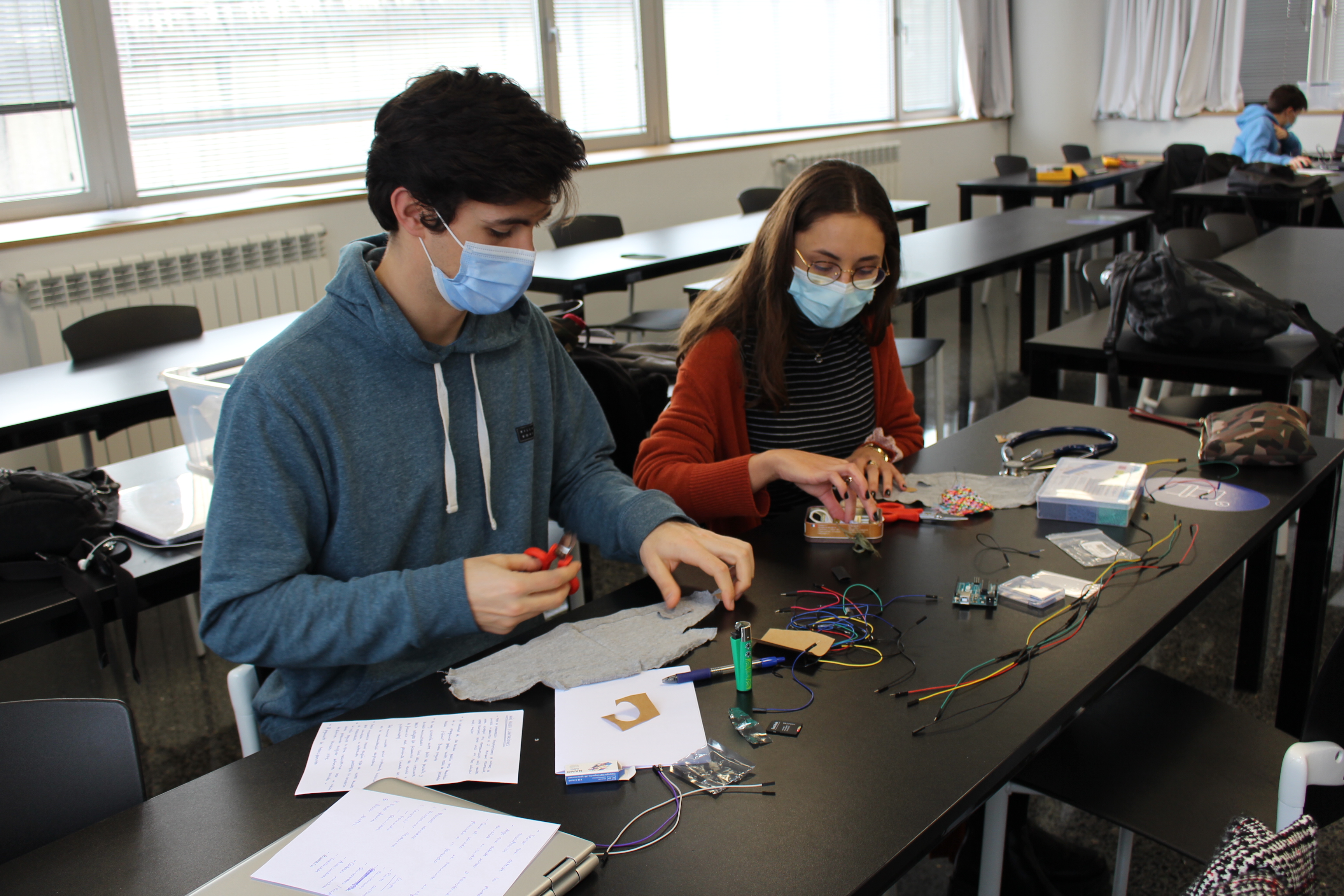News
LATEST NEWS AND EVENTS FROM THE SCHOOL OF ENGINEERING
Engineering and medical students build prototype auscultation simulator
Students solve a challenge related to the design and prototyping of simulators for learning medical techniques.

PhotoPaulaBerroa/Students working in interdisciplinary teams
21 | 02 | 2022
The course "Bio Design Engineering" has as goal that students face in interdisciplinary teams real problems in a practical way.
A few weeks ago engineering and medicine students worked together to design and build the prototype of a medical simulator. The head of the Medical Engineering Laboratory of School of Medicine and professor of Tecnun, Marcos Llorente Ortega , proposed to the students a challenge related to the design and prototyping of simulators for learning medical techniques. Specifically, they had to build a prototype simulator for auscultation.
Nicolás Lafaverge , student of Mechanical Engineering at Tecnun, explains that they had at their disposal various material resources and the challenge of pooling the knowledge of the engineers who "knew how to program but without the medical colleagues we would not have been able to tackle the work". They also had the support and supervision of the School's professors Paz Morer and Adam Podhorski and the biomedical engineer Nicolás López de Aguileta, from the Medical Engineering Laboratory.
The medical students, says Lafaverge, chose a specific pathology, mitral stenosis, studied it in depth and guided them "because depending on the patient's pathology, one sound or another is perceived at a specific point and they knew what sounds they had to hear to detect it".
"We helped them create an auscultation simulator integrated into a T-shirt. We had to explain the basic principles of auscultation and how to handle a stethoscope so that they had a better view of the problem and the possible limitations of their designs. We also helped in the design of the simulator so that it would be as similar as possible to a real phonendoscope," explains Pedro Montoro, student of medicine.
The students of Tecnun, from the Degrees of Engineering in design Industrial, Mechanical and Biomedical, were in charge of programming with arduino boards the device in addition to the rest of the hardware of the simulator, as well as creating a shirt with sensors in points core topic that the doctors had to evaluate to determine the pathology or see if the simulated patient was healthy.

Pedro Montoro , student of medicine, emphasized how "gratifying" and "fun" result has been to share hours of work with students from another discipline: "It has opened the doors to anew facet of Medicine, unknown to many. Engineers are very present in Medicine even though we don't always realize it. They design everything we use and we, the future doctors, can participate in the creation of the new technologies that will be used".
His colleague Cristina Álvarez acknowledged that they arrived knowing absolutely nothing about programming and barely understood what they were being told, but by the end of the course they were able to understand each other perfectly. "It was very cool to be able to work as a team from such different fields of knowledge, and even more so having such a difficult task as it was to develop a prototype from scratch," said Álvarez. "I loved it. In fact, we're looking forward to another edition so we can come back."
Thus, the Igara laboratories of the University's technological campus hosted for a week the second edition of the "Bio Design Engineering" course whose goal is that medical and engineering students face real problems in interdisciplinary teams in a practical way. As the professor of Tecnun Paz Morer points out, in both courses the School has counted on the participation of doctors from the Clinic to guide them about the problem to be solved, although this year it was the students themselves who participated: "It is a challenge and a challenge because they combine different knowledge and methods and approach the problems posed from different perspectives".
Collaborative work between School de Medicina and Tecnun
Dr. Francisco J. Pueyo Villoslada, director of the Simulation Center of the School of Medicine, who explained the need for the School to have a simulator for the training of students, "both for basic cardiopulmonary auscultation practices and for standardized patient scenarios".
As Marcos Llorente says, "the project is based on a need of the School: "We wanted to create a new simulator with a different approach that would be useful for the training of student body". In addition, Llorente adds, "this simulator has started with a prototype but it will be the final project Degree of students of Medicine, Engineering at design and Biomedical Engineering. There will be three integrated works, which is novel and tremendously enriching".
"Collaborative work is one of the challenges of the School of Medicine because working together makes the sparks of brilliant ideas bring the solution to everyday problems," has maintained Secundino Fernandez, then Associate Dean of the School and currently Vice President of Office of Academic Affairs of the University of Navarra.
